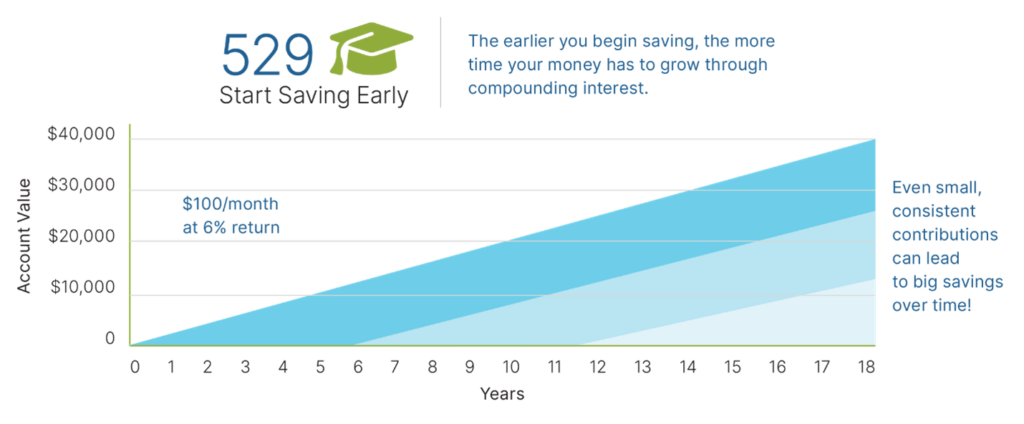Picture this scenario: Your 10-year-old receives $20 for their birthday and asks, “Can we go to the store so I can buy a new toy?” As you think about how to answer, you realize this is a perfect chance to teach an important life lesson. The impulse to get something new as soon as possible is undoubtedly a strong one—in both kids and adults—but this could be an opportunity to explain the merits of saving for a larger purchase. Helping kids understand how to manage money can create habits that stick with them and help them make smart choices in the future.
Teaching children about money isn’t just practical—it’s about giving them the tools to handle life’s challenges. Early lessons about saving, spending, and planning can set them up for success.
Why Start Early?
Kids pick up habits and lessons starting at young ages, and money skills are no different. Studies show that attitudes about money are generally formed by age seven. Teaching kids while they’re young helps them build a healthy relationship with money and equips them with skills to manage it—to save, spend, and budget responsibly. These lessons can give them the tools they’ll need to avoid financial mistakes later on. In addition to helping your child make better decisions about saving, borrowing, and investing, early money lessons will help them learn to distinguish between needs and wants, a key skill for managing money wisely.
Allowance and Budgeting
An allowance is often a child’s first encounter with money, making it a great tool for teaching the basics of finance. While you may want to designate some chores as an expectation for contributing to the household (therefore, not allowance-worthy), try giving your child a weekly allowance tied to age-appropriate tasks that go beyond their expected contribution. For example, a seven-year-old might be expected to make his bed every day, but he can earn cash for changing the sheets or putting the dirty ones in the laundry.
Here’s one way to use an allowance to teach budgeting:
- The three jars method: Give your child three jars labeled “Save,” “Spend,” and “Give.” Encourage them to divide their allowance among these jars. A common split is 50% for spending, 40% for saving, and 10% for giving, but you can adjust this based on your family’s priorities.
- Discuss spending choices: Let them decide how to use their “Spend” money. If they want a toy, talk about whether they’ll still enjoy it a week later—in other words, is it worth the spend?
- Track their money: Use a simple notebook or a basic app to keep track of allowance, savings, and spending. This helps kids see where their money is going and gain practice keeping a record of their finances.
 Setting Saving Goals
Setting Saving Goals
Saving teaches kids patience and discipline, which can be tough when they’re naturally drawn to instant rewards. Help them set a goal for something they want, like a game or a bike, and show them how to save for it.
- Set a goal together: Ask your child what they’d like to save for and figure out how much it costs. Then, break it into smaller, manageable steps. For instance, if the goal is $20 and they save $5 a week, they’ll reach it in four weeks.
- Make it visual: Create a savings tracker, like a thermometer, sticker chart, or a jar they can color in as they save. This makes the process fun and the progress visible.
- Celebrate success: When they reach their goal, congratulate them and tell them how impressed you are that they did it. Reinforce how saving leads to worthwhile rewards.
Introducing Investing
Investing might sound too complicated for young minds, but it can be easy for kids to understand with age-appropriate explanations.
- Use familiar examples: Explain investing by comparing it to planting a seed and watching it grow. Relate it to companies they know, like ones that make their favorite toys or snacks.
- Open a custodial investment account: Some financial institutions offer accounts where you can manage small investments for your child. Show them how money can grow with time and patience by explaining how the account works.
- Use simple analogies: Talk about risk versus reward. For example, keeping money in a piggy bank is safe but doesn’t grow, while investing is like planting a garden—it takes time but can yield bigger rewards.
Everyday Teachable Moments
Using ordinary situations to teach money lessons helps make the concepts stick:
- Grocery store shopping: Involve your child in comparing prices, discussing needs versus wants, and finding the best deals.
- Family budgeting: Share how you budget for things like vacations or household expenses. Simplify it so they can understand how money is allocated.
- Holiday or birthday money: If your child receives money as a gift, encourage them to split it among saving, spending, and giving.
Encouraging Generosity
Teaching kids about giving helps them develop empathy and gratitude. Suggest they donate a portion of their money to a cause they care about—like helping animals or supporting a local food bank. Explain how even a small amount can make a big difference.
A Lifelong Skill
By teaching kids about money early, you’re giving them skills they’ll use forever. Financial literacy helps them make smart decisions, avoid debt, and even build wealth. Whether it’s through an allowance, saving for a goal, or exploring investing, these lessons will prepare them for the future. Start small, keep it consistent, and watch them grow into confident, money-savvy adults.
© 2025 Commonwealth Financial Network®


